When COVID hit, many folks looked to their place of worship for resources and guidance. This came as no surprise to Guillermo Reece, Lead Liaison for the San Francisco African American Faith-Based Coalition (SFAAFBC). The reason? As a faith-based advocate for his parish, he’s seen firsthand the trust and responsibility that community members place in their churches.
“Instead of calling their social worker, or contacting the city, they’ll contact the liaison in the church: ‘I have this issue going on. Where do you suggest I can go to get help?’”
Addressing Existing – and Worsening – Food Insecurity
The SFAAFBC is a coalition of 22 churches that works to end health inequity in San Francisco’s African American community. Founded in 2015, their mission — addressing “Health, Hunger, and Homelessness” in San Francisco — became even more urgent as the pandemic began affecting all three.
As research continues to point out, health gaps and food insecurity rates have increased for many of our Black/African American neighbors over the past two years. And as Guillermo says, “there was always food insecurity” in the parish, even before COVID began.
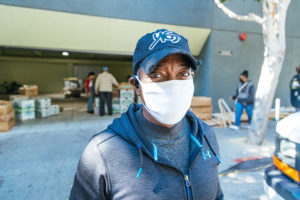 Luckily, SFAAFBC isn’t an organization that waits for a solution. When they recognized the rising need in their community during the early stages of the pandemic, SFAAFBC leadership approached the Food Bank.
Luckily, SFAAFBC isn’t an organization that waits for a solution. When they recognized the rising need in their community during the early stages of the pandemic, SFAAFBC leadership approached the Food Bank.
“Through that conversation, we developed a relationship with them centered on responding to what their community needs,” said Irene Garcia, Program Manager at the Food Bank. “SFAAFBC has been critical in reaching San Francisco’s African American community and we’re constantly learning from them.”
It’s More Than Just Food
To better reach their parish, SFAAFBC and the Food Bank use a food hub model to get groceries out to the community. First, the coalition splits into two groups of 11 churches, so each church receives groceries every other week. Every Saturday, the Food Bank drops off pre-packaged boxes of food at SFAAFBC’s joint site with TogetherSF. Each church sends volunteers and support staff to the site to bring back their allotted number of boxes for their parish. Families can then swing by their respective churches and pick up their groceries. The rest of the food boxes are home-delivered to parishioners, often seniors, who can’t come by in person.
Currently, SFAAFBC serves 840 families every Saturday through this mix of home delivery and distribution from different church locations. Over the past two years, food has become a vehicle for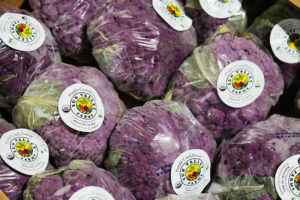 delivering more than nutrition to their parish. SFAAFBC’s holistic approach allows them to target the root causes of food insecurity by caring for the whole person.
delivering more than nutrition to their parish. SFAAFBC’s holistic approach allows them to target the root causes of food insecurity by caring for the whole person.
“During the pandemic, the food we were receiving from the Food Bank was very important to deliver to people who were positive for COVID. It’s developed into such a wonderful program to reach the community. When they come to the church, they can get food help, spiritual help, referrals to housing, mental health, education, and other agencies. It’s a one stop shop,” said Guillermo.
Beyond Crisis Support: What the Community Needs
As Guillermo notes, food can open the door to other services. So, both SFAAFBC and the Food Bank are looking for ways to build and expand the scope of the program as the partnership continues growing.
“This has evolved into a very pivotal and important part of our service to the community. It’s also created a conversation of what the community needs,” said Guillermo. He is quick to point out that certain dietary needs and preferences, health conditions, and medications can affect the foods folks can eat.
“When I think of SFAAFBC, I think of a group of people who are committed to advocating on behalf of their community and sharing what is and isn’t working. This feedback loop helps us partner to provide better access for parishioners who may have trouble attending a pantry. I’m excited to be a part of the next phase of our partnership,” said Irene.
Irene is also looking forward to the potential of creating similar programs with other community partners: “Providing home deliveries, or implementing a food hub model that’s super flexible, are on the horizon for more food pantries.”
Guillermo is hopeful for what the upcoming year will bring, in part due to ongoing conversations with the Food Bank about making the program healthier and more equitable for the community.
“With more communication and more partnering, I believe we will be able to continue this successful program in the future.”



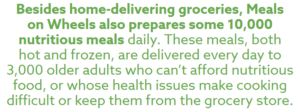
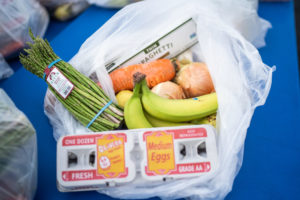 Partners like Meals on Wheels, as well as our own
Partners like Meals on Wheels, as well as our own 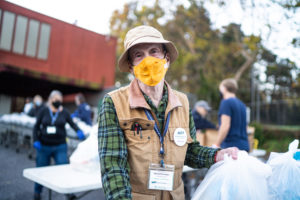
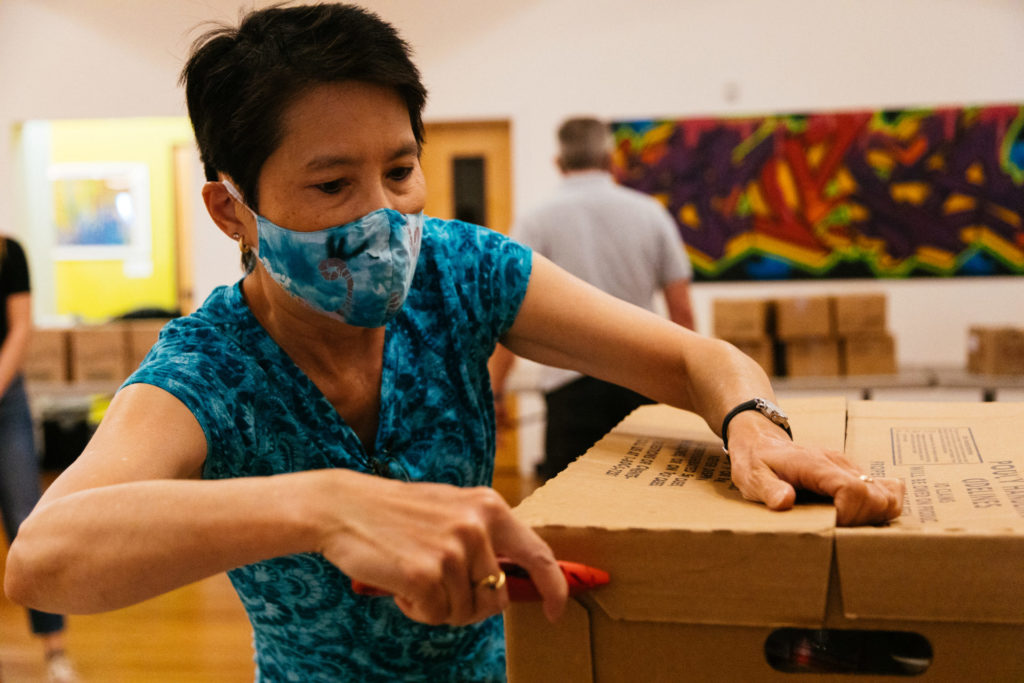
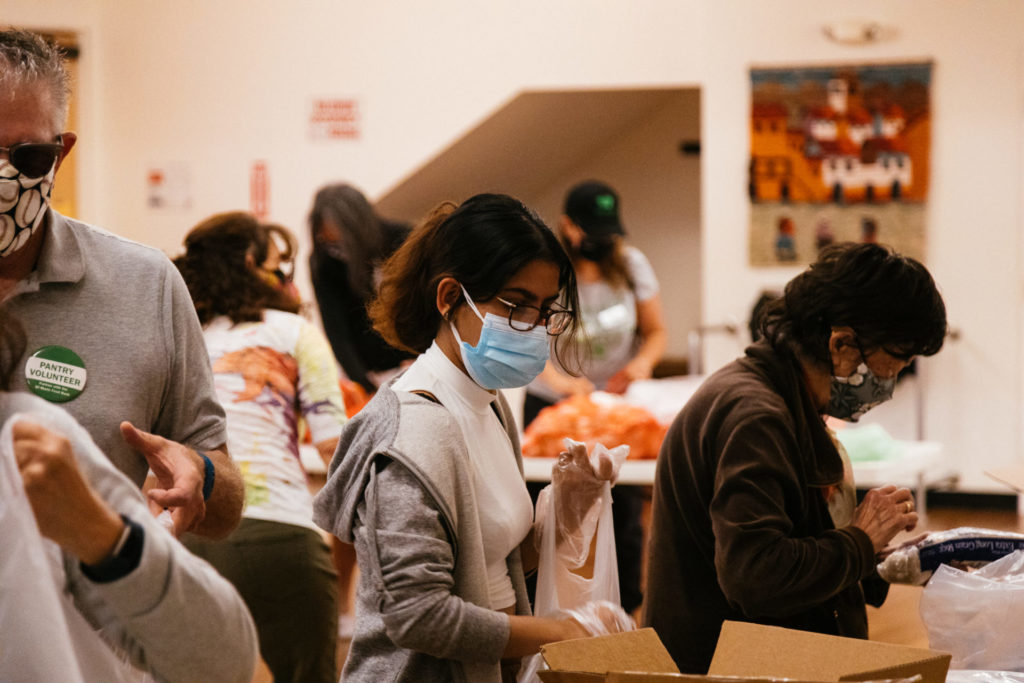
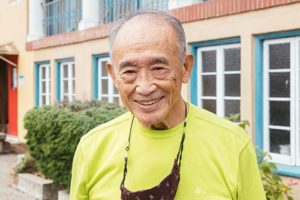 Covenant Presbyterian sits at the corner of 14th Avenue and Taraval Street and is deeply embedded in San Francisco’s Sunset District.
Covenant Presbyterian sits at the corner of 14th Avenue and Taraval Street and is deeply embedded in San Francisco’s Sunset District. By 10:15 – just as dancers are making their way upstairs – volunteers are downstairs cleaning up the food pantry. Week three after a more than year-long hiatus everyone is excited to be back.
By 10:15 – just as dancers are making their way upstairs – volunteers are downstairs cleaning up the food pantry. Week three after a more than year-long hiatus everyone is excited to be back.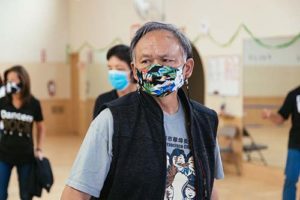 Just like the dance class, the pantry draws a loyal following of volunteers. Ranging in age from teenagers to over 90-year-olds, many have been coming since the pantry first opened its doors 15 years ago.
Just like the dance class, the pantry draws a loyal following of volunteers. Ranging in age from teenagers to over 90-year-olds, many have been coming since the pantry first opened its doors 15 years ago.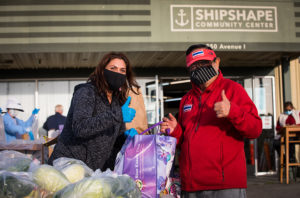 When you
When you 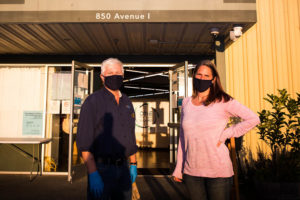 Treasure Island didn’t even have a grocery store until
Treasure Island didn’t even have a grocery store until 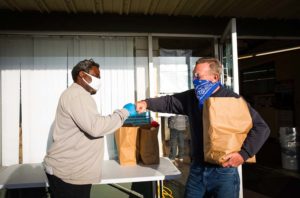 Dave, a participant for over ten years, previously worked in landscaping and was barely getting by
Dave, a participant for over ten years, previously worked in landscaping and was barely getting by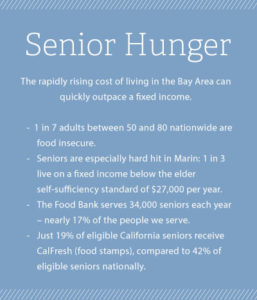 We first met Phillis (89) and Lee (81) in a line of cars waiting for groceries at the San Geronimo Valley Community Center’s
We first met Phillis (89) and Lee (81) in a line of cars waiting for groceries at the San Geronimo Valley Community Center’s 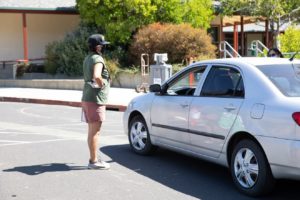

Share